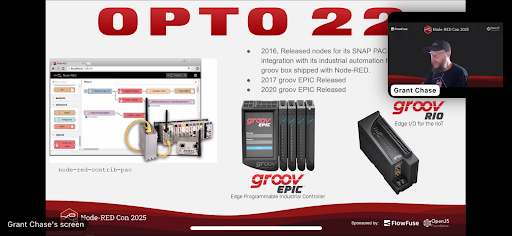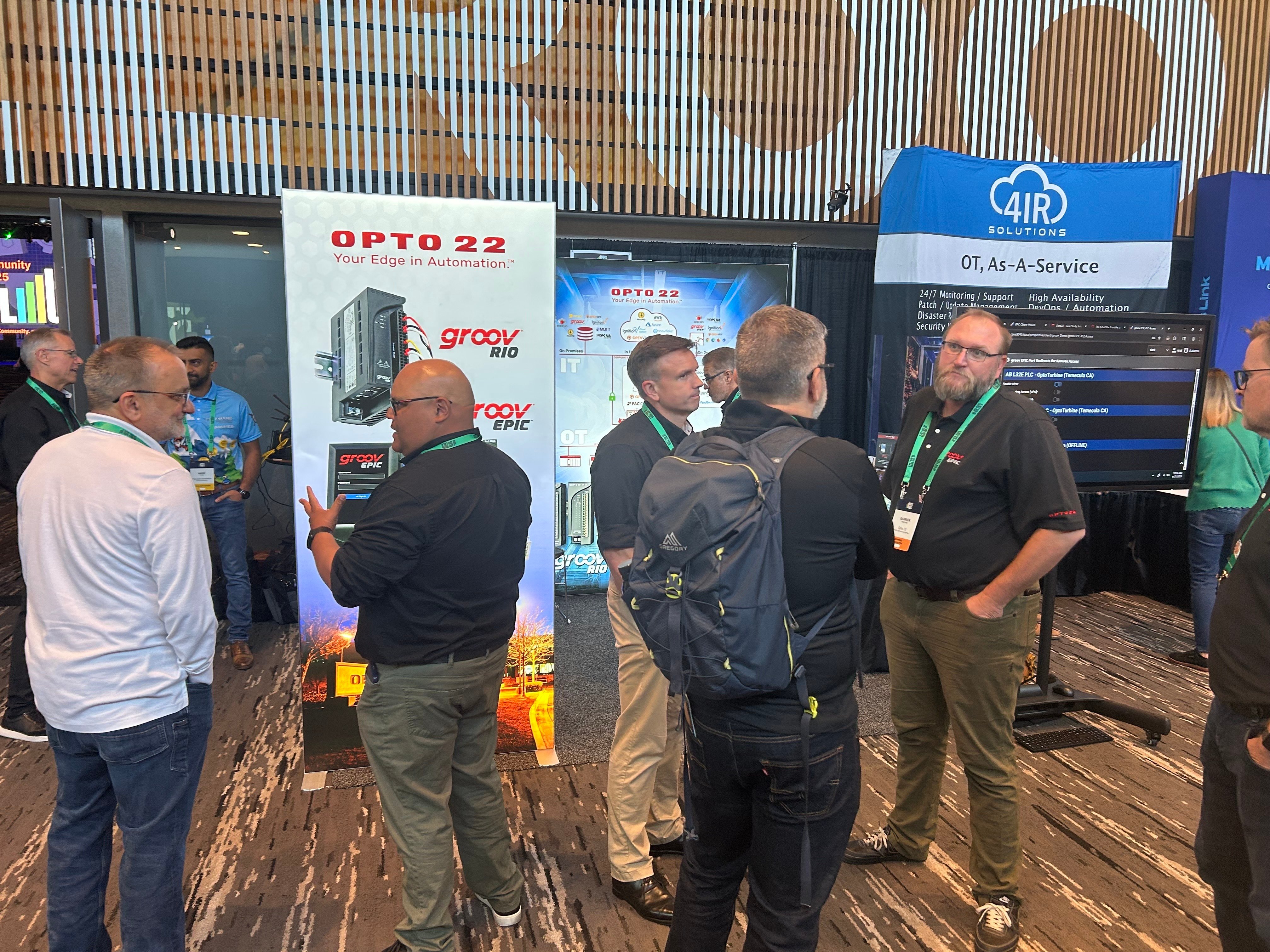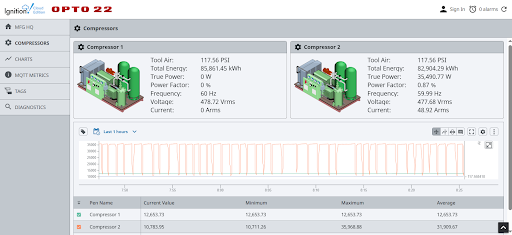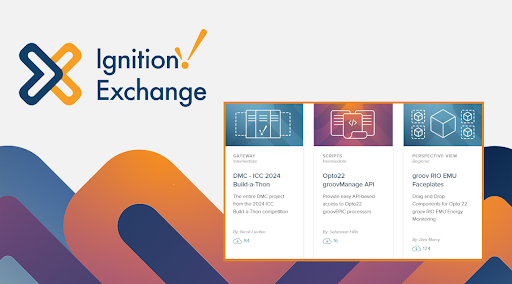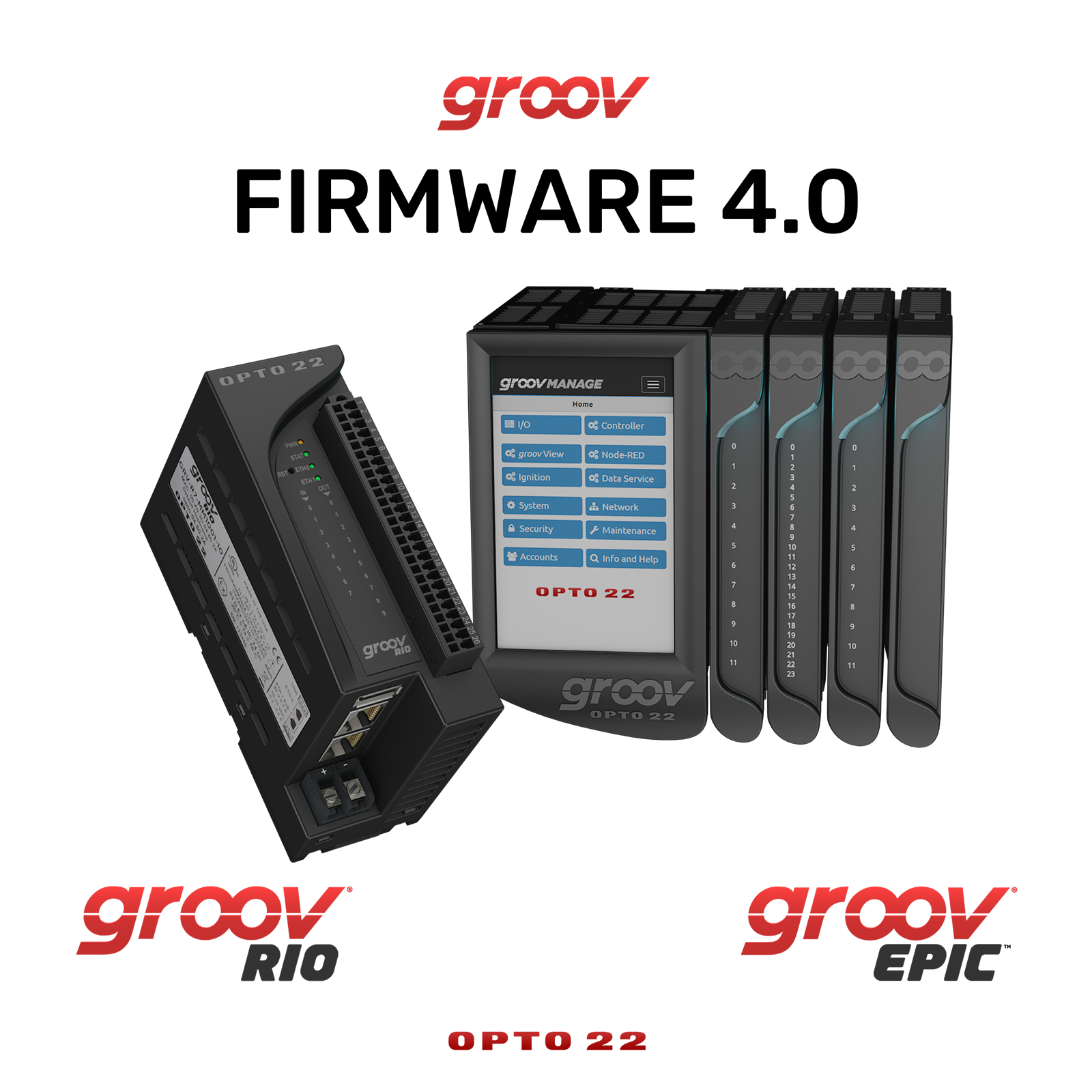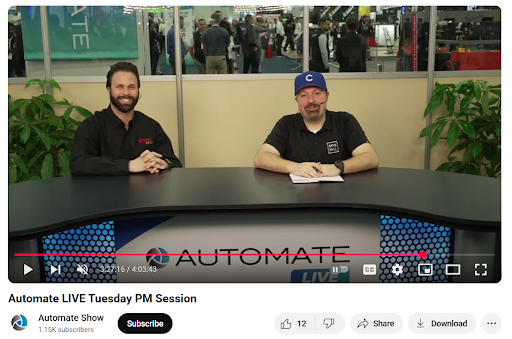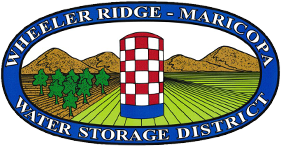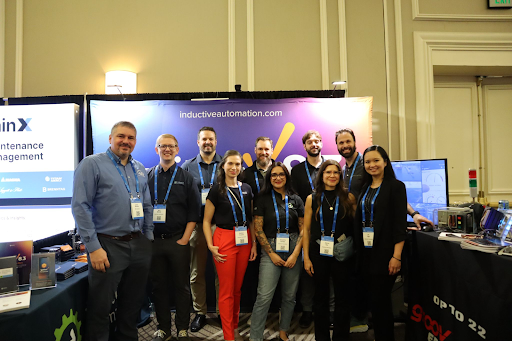Dan White
Dan has worked at Opto 22 for more than a decade. His Tufts Engineering background, MBA in International Business, and prior industrial controls experience give him a unique edge in automation. Dan enjoys staying active through biking, basketball, skiing – and keeping up with his three young kids!
Watch recorded conference sessions for FREE and learn how to connect your systems with Node-RED.
Included in groov EPIC and groov RIO is Node-RED, an open-source software program that allows you to wire together devices, databases, cloud applications, and APIs (application programming interfaces) using simple logic flows.
Node-RED is being used in a wide range of mission-critical applications, from city utilities and semiconductor fabs to manufacturing lines and smart buildings.
Anywhere an engineer needs two systems to talk, Node-RED often shows up. It’s a visual way to move data, trigger actions, and link systems. Due to Node-RED's growing popularity, it's no surprise that last week's Node-RED conference provided some excellent resources and idea exchanges.
Discover the key takeaways from the conference and gain access to the session recordings.
Read More
Topics:
Events & conferences,
Node-RED,
groov EPIC,
groov RIO
From the release of Ignition 8.3 software to the ProveIt! showcases live on stage, get all the highlights from this year's Ignition Community Conference.
If you’re like many in manufacturing, you’re still facing the same challenges:
-You don’t have clear visibility across machines
-Your data is incomplete or unreliable
-Legacy systems don’t connect to new ones
-Your AI and analytics plans stall at step one
Those problems and some solutions were front and center at this year’s Ignition Community Conference.
Read More
Topics:
Events & conferences,
groov EPIC,
Ignition,
Ignition Community Conference,
groov RIO
New live demo provides a practical example of how to set up machine monitoring at your facility.
Whether you're trying to cut energy costs, avoid unplanned downtime, or just get eyes on what's actually happening on the plant floor, real-time machine monitoring gives you the information you need to act.
If you're looking for a practical example of how to do it—using real equipment, standard protocols, and a system that's running 24/7—try out a new live demo that shows exactly how we’ve set up our own machine monitoring at Opto 22 headquarters in Temecula, California.
Read More
Topics:
groov EPIC,
Ignition,
Ignition Cloud Edition
Take advantage of free tools to jumpstart your industrial automation projects.
Whether you're an engineer, technician, or developer, starting a new project can be daunting. But what if you could hit the ground running with resources that streamline your workflow?
Let's explore how you can accelerate your application using a suite of free tools designed to simplify and expedite your development process.
Read More
Topics:
PAC Control,
Node-RED,
CODESYS,
groov EPIC,
developer,
Ignition,
groov RIO,
python
This new firmware release upgrades the foundation of all your groov EPIC and RIO devices—without changing what works.
Firmware 4.0 transforms the core of every groov device we’ve ever shipped, while keeping everything you rely on right where you left it.
Learn what's new, along with how and why you should update.
Read More
Topics:
Updates,
Firmware,
groov EPIC,
groov RIO,
groov rio emu
#Automate2025 boasted record attendance, powerful partnerships, and unforgettable networking in the heart of Detroit.
If you're looking to stay ahead in the world of industrial automation and robotics, Automate 2025 was the place to be—and here’s why you should mark your calendar for next year.
This year's Automate show shattered attendance records, reflecting an industry that's booming with innovation and opportunity. Curious about what drove the excitement?
Read More
Topics:
Events & conferences,
IIoT,
groov EPIC,
industrial automation,
Ignition,
groov RIO
Get the answers to your questions on how today's economic conditions will affect your current projects and timelines.
If you’ve been keeping an eye on trade news, you’ve seen the headlines: new tariffs are rolling out, and the ripple effects are hitting manufacturers across industries. So what does that mean for your Opto 22 systems?
Read More
Topics:
groov EPIC,
industrial automation,
groov RIO,
Made in USA,
supply chain
Catch up on presentations from this year's ARC Forum and see why these discussions matter for you.
If you couldn’t make it to the ARC Industry Forum this year, you’re in luck. The sessions featuring Opto 22 users and industry leaders are now available to watch on YouTube.
From industrial AI and digital transformation to smart manufacturing, hear real stories from the field.
Read More
Topics:
Events & conferences,
IIoT,
industrial automation,
smart manufacturing
Is your SCADA system holding you back? See how the Wheeler Ridge-Maricopa Water Storage District fixed their outdated systems.
If you’re managing critical infrastructure, how much do you trust your SCADA system? Are you getting real-time, reliable data, or are you constantly battling delays, communication failures, and rising maintenance costs?
Wheeler Ridge-Maricopa Water Storage District faced those same challenges—until they partnered with Avadine, an IoT-certified OptoPartner, to upgrade their SCADA system. Read about their new solution and how they got there.
Read More
Topics:
Case studies,
groov EPIC,
Ignition,
OptoPartner
If you're in the industrial automation field, you'll want to hear about the annual ARC Forum that keeps you thinking ahead.
If you didn’t make it to the 29th Annual ARC Industry Forum, you missed out. But this blog post will get you up to speed!
Here’s what went down and why this event continues to matter:
Read More
Topics:
Events & conferences,
Ignition Edge,
ARC Forum,
Ignition,
Inductive Automation

